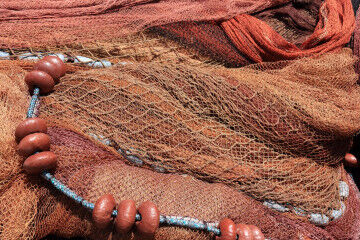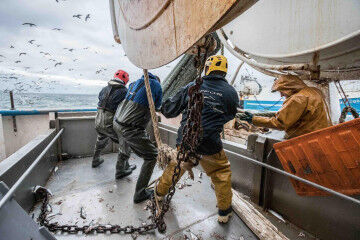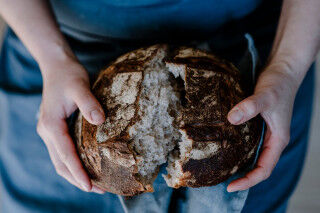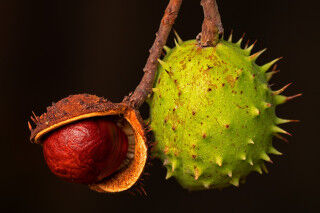The phrase "the sea is full of fish,” that comforting old-school platitude said to people fresh from romantic break-ups, is truer these days in the old-school cliché than in any actual physical sense.
The topic has been back in the spotlight in recent weeks thanks to Seaspiracy, a Netflix documentary that takes viewers on a journey around the world to investigate the many threats to life in the oceans. Although the documentary's intent to alert public opinion to the problems related to overfishing is laudable, the documentary walks a fine line thanks to the use of misleading statements. These statements are intended to highlight the questionable notion of sustainable fishing as even possible. For example, one of the most shocking statistics cited in Seaspiracy is incorrect: a study from 2006 and cited in the documentary, avowing "emptied oceans by 2048," was contradicted by the study's own author.
Without a doubt, though, making environmentally friendly choices when shopping is not easy: navigating the numbering of FAO zones (indicating fishing locations) is anything but intuitive, especially for the average consumer, as is understanding minimum sizes necessary for the purchase of safe fish types for purchase. And that’s without even getting into the sadly widespread practice of illegal fishing.
Where can we start to understand how we should be making our purchases? Where can we turn for reliable, easy-to-understand information on sustainable fish consumption? A great place to begin is with consultation of fabled environmental organziation Greenpeace, who has put together a so-called “black list.” Here, species most at risk, and therefore to avoid, are listed.
Another possibility is to follow the signs of MSC’s (Marine Stewardship Council) blue label. This international non-profit organization has put together a labeling system that successfully identifies and certifies sustainable practices of agribusiness-based companies. If you see the blue label present on the item you’ve got in mind, you can rest assured that the MSC has certified that this product not only originates from an independently certified fishing company, but also that the products are always traceable to a correct and certified supply.
AS TRANSPARENT AS TINNED TUNA FISH
We’ve got some concrete examples to help you start navigating this marine sustainability world.
In recent years, canned and tinned tuna has been moving forward with an eye on sustainability, with the tuna fish being one of the marine world’s most abused and ill-treated fishes.
Mare Aperto Foods, founded in 2015 as a spin-off of Spanish parent company Jealsa with the goal of marketing canned tuna in Italy, has followed through on their stated commitment to use 100% of the raw material needed for their tinned tunas.
What they’re not able to use directly is diverted to other markets, for instance, the cosmetics industry that extracts collagen directly from tuna bones. Following this principle, Mare Aperto Foods has successfully implemented a principle of "Zero Waste" for tuna, with the company aiming to replicate this success with other marine species.
One more: one of Italy’s biggest names in the local tinned tuna market, Rio Mare, is working in partnership with WWF. In this collaboration, Rio Mare is dedicating human and economic resources towards their declared goal of utilizing more and more sustainable fish in their products, with their producers dedicating themselves to sustainable fishing practices. The company and WWF are also working together to promote improved management of their in-house fishing activities.
Adding a bit more impact into their partnership, the unlikely bed fellows are working together also on the human side of sustainability. While so often the focus on eco-friendly products remains an actual environmental perspective, in this case, Rio Mare and WWF are working together as well to protect the human rights of all those involved within the supply and production chain of these products. The more care is taken with both marine and human facets of this issue, the more consumer awareness is raised towards the importance of sustainable fishing.
MORE THAN JUST FILLETS
Buying sustainably-produced fish is just part of the package though. What do you do once you’ve gotten your sustainable fish home? The approach towards limiting and reducing waste is also an approach that needs attention in your own kitchen.
A popular movement in the past few years has begun from international top chefs. They’ve increased awareness of meat-based livestock’s so-called Fifth Quarter: the less-noble meat cuts often overlooked in favor of traditional cuts like filet. Today’s chefs have brought much-needed attention to the discrepancy between a cut of meat weighting a few kilos and the overall weight of the animal which often exceeds 100 kilos.
And while this is an important and admirable step in the right direction for meat, the same cannot be said of chefs working with fish. Here, the emphasis greatly remains on the fillets of the fish, wilfully ignoring the rest of these marine species.
There are signs of movement here too, albeit in the nascent stage. Culinary pioneers are making themselves heard, and leading the way towards an alternative path. Italian publishing company Giunti has recently released “Il Grande Libro del Pesce” (The Big Book of Fish) by Australian chef Josh Niland.
Niland’s extraordinary perspective can perhaps best be understood if we remember the original title of his book, as published in Australia: The Whole Fish Cookbook. As you can imagine, the entire, “whole,” fish is discussed and used.
In a giant step away from traditional fish use, both at home and in restaurants, Niland moves away from classical dishes and their startlingly excessive discards, in favor of a clear discussion and explanation on the use of marine specimens in their entirety. Niland discusses and explains the use of absolutely everything, from entrails to scales, from bones to eyes - nothing is overlooked and everything is used in a way to demonstrate the immense potential of this raw material.
Not everything that glitters is gold, sometimes what glitters is fish scales.
Did you enjoy reading and learning how to create more sustainable food practices? Make your time in the kitchen sustainable and ecologically-friendly while you further explore this concept with Mamablip, applied in another fascinating article to the yummy world of Italian sweets. Francesca Ciancio of Mamablip explores a bakery that focuses on sustainable Panettones - it's never too early to think about holiday desserts! Check out Mamablip's recipes for lots of culinary inspiration and ideas on where you can incorporate sustainable ingredients too.
Don't forget to register for Mamablip's weekly newsletter for updates on all the exciting newest Mamablip Blog articles, recipes and other wine news from Italy.












